On September 9, the Vivekananda International Foundation (VIF) organized a Vimarsh on 'The Story of Indian Warfare' by Col. Ajay Singh (Retd). He is the recipient of the Rabindranath Tagore International Award for Art and Literature 2021 and the Bharat Literary Award 2023. He has authored seven books and over 200 articles in a wide range of genres. His books include ‘The Battles that Shaped Indian History’, a collection of twelve of India’s major battles; ‘A Spectrum of Modern Warfare’; and ‘India’s Battlefields from Kurukshetra to Balakot,’ which covers 42 of India’s battles; ‘War in Ukraine: The Conflict and its Global Impact’ and ‘Ukraine, Gaza, Taiwan… A World at War’.
Dr. Arvind Gupta, Director, VIF, delivered the opening remarks in which he briefly talked about India’s remarkable military history. He also highlighted the lack of interest in the study of military history, which creates a disconnect with the past. Most of the history books in the past were written from a colonial and leftist perspective. The purpose of these types of literature was to instil a sense of inferiority amongst the Indians. In recent years, several Indian authors have taken up the responsibility of writing about Indian history from an Indian perspective. Col. Ajay Singh’s books like ‘India’s Battlefields from Kurukshetra to Balakot’ will be a contribution to the military history of India. Throughout Indian history, battles fought between Porus and Alexander, Prithiviraj Chauhan and Muhammad Ghori, Lodi and Babar, Hemu and Akbar, Sadashiv Bhau and Ahmad Shah Abdali, battles fought by Chhatrapati Shivaji and the Battle of Plassey have proven to be turning points and shaped Indian history. Dr. Gupta also said that India needs to explore and find the reasons behind the defeat of Indian rulers in critical battles across Indian history.
Col. Ajay Singh's talk on the story of Indian warfare provided a complete outline of the key battles that have shaped the destiny of the Indian subcontinent. He highlighted how warfare in India has progressed over thousands of years and how it has left an indelible mark on the nation’s psyche. The most impactful battle in Indian history was the 18-day battle fought at Kurukshetra during the Mahabharata. The epic battle symbolizes a Dharmic war in which the good won over the evil forces. The battle at Kurukshetra gave emphasis on the heroes and developed the practice of hero worship. This practice unfortunately stayed with Indians and dented India’s war efforts as focussed more on individuals rather than the military as an organisation. Fortunately, India was producing great individual warriors throughout the ages, but our organisational skills as a unit or group kept lacking.
India as a geographical entity was blessed, and it was also impregnable. It had the ocean on the peninsular side, the Hindu Kush Mountain range in the northwest, and the mighty Himalayas in the northeast. But India over the ages had neglected the maritime domain and the six mountain passes in the northwest, which allowed the invaders to come inside and alter the political history of the Indian subcontinent.
Col. Singh stated that the term ‘Aryan Invasion’ was manufactured by the colonials to undermine Indian history. The Aryan invasion was actually a transmigration of shepherds, tribes and traders from northwestern Asia, which happened over a long span of time. It was not the invasion that certain history books made it out to be. One of the earliest battles fought between an Indian ruler and a foreign invader was the battle between the King of Pauravas (mispronounced Porus by the Greeks) and Alexander on the banks of the Jhelum River in 326 BCE. Despite Alexander’s mighty army, Porus’s forces managed to inflict heavy casualties on the formidable Greeks. Porus retained his kingdom, but Alexander’s men mutinied after the battle at the Jhelum River. The battle demonstrated the strength and bravery of Indian warriors. The Greeks were dissuaded from entering the Indian subcontinent because of the stiff resistance provided by the Indian forces.
The invasion of Alexander brought the first call for nationalism in India. Chanakya urged the Indian kingdoms of the time to stop fighting between them and focus their energies towards fighting the remnants of the Greeks, like Seleucus. This led to the formation of the mighty Mauryan Empire in India. The Mauryan Empire was far greater than any other empire emerging in India in terms of geographical expanse. In the "golden age" of Indian history, powerful centralized empires such as the Guptas, Cholas, Rashtrakutas, and Pallavas rose to prominence. During this golden age, India was strong and prosperous and was able to successfully repel invasions from various foreign forces, like the Huns, Kushans, and Shakas, etc. In this golden era, Nalanda emerged as the centre of learning in the entire world.
The turning point in Indian history came with the Arab invasions of Sindh in the 8th century CE. The rulers of Sindh gave stiff resistance, but after 70 expeditions and 80 long years, the Arabs were able to conquer Sindh. This was followed by another watershed event, the defeat of Prithviraj Chauhan by Muhammad Ghori in the Second Battle of Tarain in 1192 CE. In the First Battle of Tarain, although Prithviraj had defeated Ghori, he failed to decisively eliminate the threat. The retreating army of the Ghors could not be chased and eliminated by the Rajput forces as they were spread out, and they could not regroup in time to pursue the enemy. As a result, Ghori returned with greater force, defeating the Rajput king and paving the way for the establishment of the Delhi Sultanate. This marked the beginning of a long era of foreign rule in Delhi, which persisted until 1947.
Col. Singh also highlighted another pivotal event in Indian history: the First Battle of Panipat in 1526 CE. Babur came to India with a smaller but technologically advanced army. Armed with gunpowder weapons like cannons and muskets, Babur defeated the numerically larger army of Ibrahim Lodi. This marked the beginning of the Mughal Empire, which would dominate the subcontinent for the next 300 years. Gunpowder existed in the Indian subcontinent prior to 1526 CE, but its use was limited to pyrotechnics. The use of gunpowder in warfare was neglected by Indian rulers and they struggled to adapt to this new form of warfare. In 1527 CE, in the Battle of Khanwa, the Mughals defeated the Rajputs under Rana Sangha, using exactly the same template as in the First Battle of Panipat. Rajput forces bravely charged towards the Mughal cannons and were obliterated. However, resistance to Mughal rule persisted, with leaders such as Maharana Pratap of Mewar, the Ahoms in Assam, and Chhatrapati Shivaji in the Deccan offering fierce opposition.
Chhatrapati Shivaji's role in carving out the Maratha Empire out of the Mughals in the 17th century was another focal point of Col. Singh’s talk. Shivaji’s military tactics, especially the use of light cavalry, allowed him to defeat the resource rich Nizams of Hyderabad and the Mughal forces, establishing the Marathas as a dominant force in the Deccan. Shivaji’s legacy was carried forward by the following Peshwas of the Maratha Empire, particularly Bajirao I, the seventh Peshwa of the Maratha Confederacy, who was undefeated in 41 battles. The Marathas territory stretched from Kandahar in the west to Kolkata in the east. However, this rise was followed by a devastating fall in the Third Battle of Panipat in 1761 CE, when Ahmad Shah Abdali, invited by the Nawab of Awadh and the Rohillas, defeated the Marathas under Sadashiv Rao Bhau in one of the bloodiest battles in Indian history. There were multiple reasons for the defeat of the Marathas. They had antagonized the Jat and Rajput rulers on their way to Panipat. The Maratha forces moved very slowly, as they also had women in large numbers accompanying them. They Marathas also had caste divisions within them.
The Maratha defeat at Panipat not only weakened the Marathas but also paved the way for the British to consolidate their hold over the subcontinent. The British used treachery and bribed Mir Jafar, the Commander-in-Chief of the Bengal army, in the Battle of Palashi (Plassey) in 1757 CE. Siraj-ud-Daulah, the Nawab of Bengal, was defeated in this battle, and the British were able to establish their rule in Bengal. Over time, the British fought multiple battles against several Indian rulers. The British also used race and religion to divide the Indians. They turned the Indian rulers against one another to maintain control. The British fought and defeated Mysore under Tipu Sultan, which was followed by the Anglo-Maratha wars, Anglo-Sikh wars and Anglo-Gorkha wars. In the Revolt of 1857, the British used newly inducted Sikh and Gorkha soldiers in the British Indian Army to crush the mutiny of the soldiers from the Bengal Army.
Col. Singh concluded his talk by reflecting on India’s post-independence military history, which includes wars and hostilities with Pakistan and China. In 1947, just after the British left India after partitioning the country into two parts based on religion, India fought the newly created state of Pakistan over Jammu and Kashmir. This was followed by the greatest military defeat faced by independent India in 1962. India was carrying the delusion of pacifism after independence. This delusion was crushed by China in 1962, in which India lost Aksai Chin to the Red Army. Post the debacle of 1962, India and the Indian army went through changes that helped us repel Pakistan when it attacked India in 1965. India was proactive and crossed the international boundary and entered Pakistan. Col. Singh highlighted the 1971 war, which resulted in the creation of Bangladesh, as a defining moment for the Indian military. He also briefly mentioned the Kargil War. Throughout his talk, Col. Singh underlined the examples of resilience, bravery, and resistance of Indians who fought to preserve their sovereignty and culture.


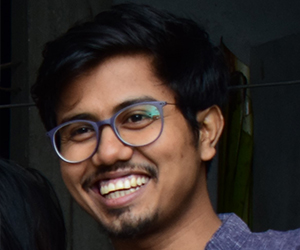
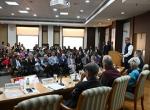

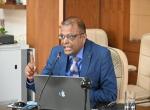
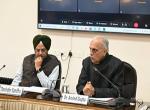
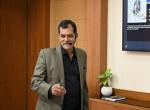
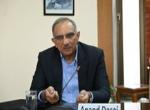
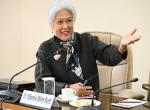
Post new comment